Floor Cleaning 101: How to Choose the Right Floor Sweeper Broom

The first step to cleaning a floor is to remove the loose debris. In many commercial and industrial settings, walk-behind or rider floor sweepers are utilized to quickly and efficiently clear large spaces. Some even use industrial sweeper-scrubbers which, as their namesake implies, combine the first two steps of the cleaning process.
To sweep the floor, you’ll need a broom. That part is simple. What isn’t necessarily simple is that between all the different fill materials and patterns, there are many variations in floor sweeper brooms. We created this guide to help you determine which type of broom will work best for your sweeping needs. As an added bonus, we’ve included our FREE downloadable buying guide at the end of this article!
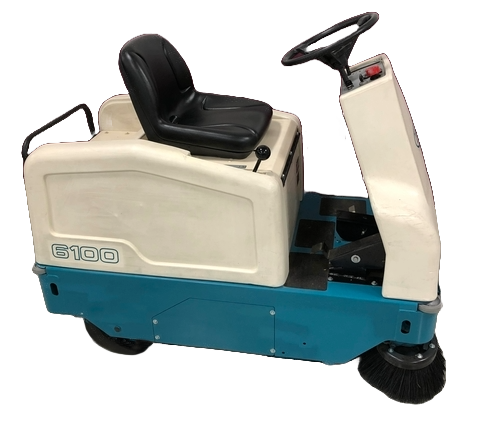
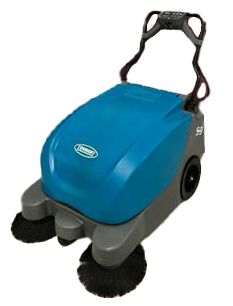
Choosing the Right Sweeper Broom
The type of sweeper broom you need will depend on the type of floor application as well as the type of debris you need to remove. These factors determine what kind of sweeper fill material and fill pattern you need to get the job done. Continue reading to learn the difference between main and side brooms, the types of fill materials, and the most popular fill patterns.
Difference Between Main Brooms & Side Brooms
Sweepers use two different types of brooms:
Main Brooms
Main brooms are cylindrical brushes that are designed to gather and sweep material into a container called a hopper. All sweepers have a main broom.
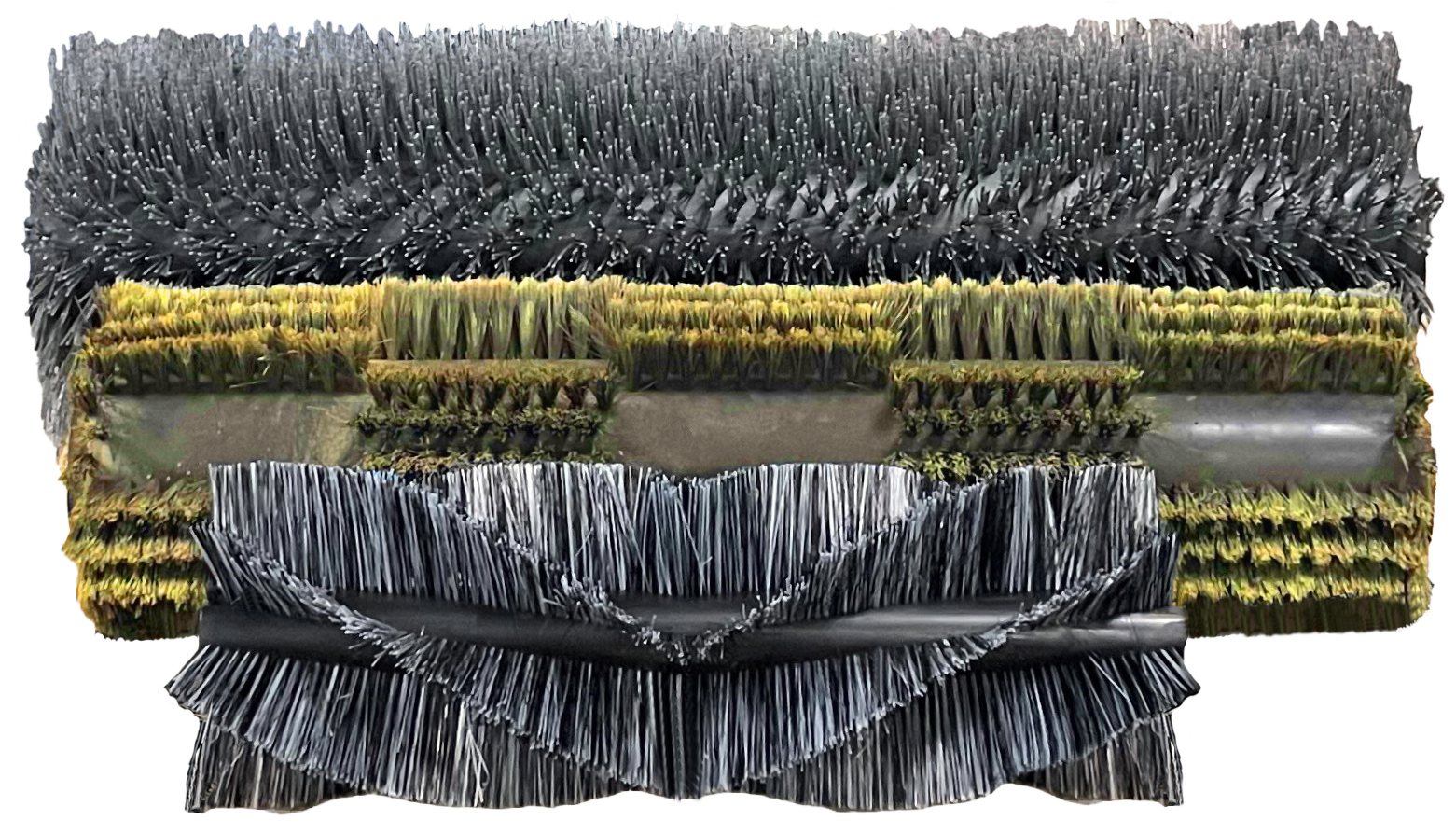
Side Brooms
Many machines also use side brooms in tandem with main brooms. Side brooms are disc-shaped brooms that help extend the reach of the sweeper to gather harder to reach debris and funnel it towards the main broom.
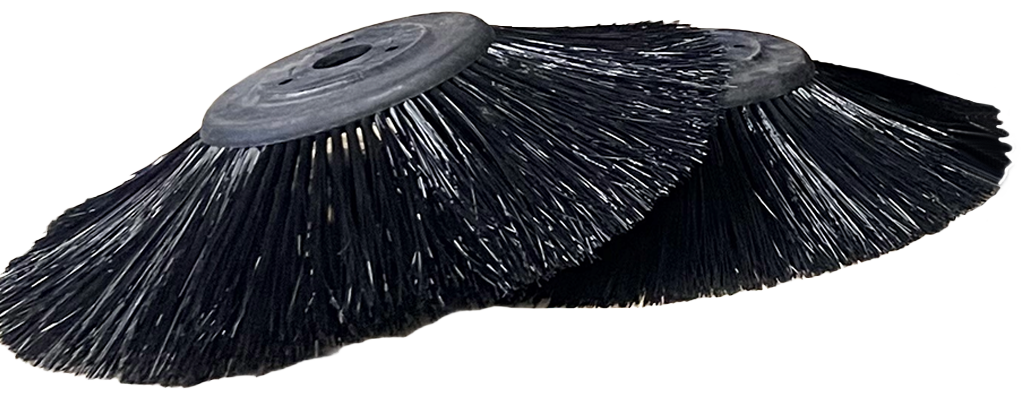
Sweeper Broom Fill Materials
When choosing the best broom material, you must consider both the type of surface it will be sweeping as well as the debris it will be removing. Here are the most common sweeper broom materials in order of most aggressive to least aggressive:
Crimped/Crinkle Wire
Crimped or crinkle wire brooms are considered “special purpose” as they are very aggressive and should only be used on unsealed surfaces for heavy-duty sweeping, such as to clear compacted dirt or debris. Wire alone does not efficiently sweep or control dust, so crimped/crinkle wire brooms should only be used in low-dust environments.
Poly/Wire Mix
Poly/Wire Mix brooms are heavy-duty, high-efficiency brooms as the polypropylene bristles provide a general-purpose base while the wire bristles add moderate cutting ability. Because of this balance, Poly/Wire Mix brooms work great in both indoor and outdoor settings, including damp or humid conditions. However, it does not control dust as well as Union/Wire Mix and should never be used in high-temperature sweeping conditions.
Union/Wire Mix
Similar to Poly/Wire Mix, this fill combines Union Mix (natural fiber) bristles with wire bristles for added cutting ability to tackle compacted dirt and debris. While the natural fiber of the Union Mix has a shorter wear life than synthetic fibers such as polypropylene, it offers superior dust control and the capability to sweep fine debris. It can also be used in high-temperature sweeping conditions and on harsh chemicals.
Union Mix
Union Mix is a natural fiber fill composed of tampico and bassine fibers that can be used on most floor types. It is highly efficient for controlling dust and other fine debris. Because it is a natural material, it can be used in high temperature sweeping conditions and on harsh chemicals. However, it has a shorter wear life than other synthetic materials.
Polypropylene (Poly)
Polypropylene is a general-purpose broom fill material with a good wear life. It can be used in wet conditions and on most types of flooring, making it a versatile fill material. While it can be used in moderately dusty environments, it does not control dust as efficiently as Union Mix does. However, it should never be used in high-temperature sweeping conditions.
Nylon
Nylon is a durable general-purpose fill material that is slightly more gentle than Polypropylene and Union Mix and has a very good wear life due to its flexible bristles. Nylon also offers great hopper loading performance. While Nylon works well for sweeping rough surfaces and in high-temperature environments, it does not perform well in wet or high humidity conditions.
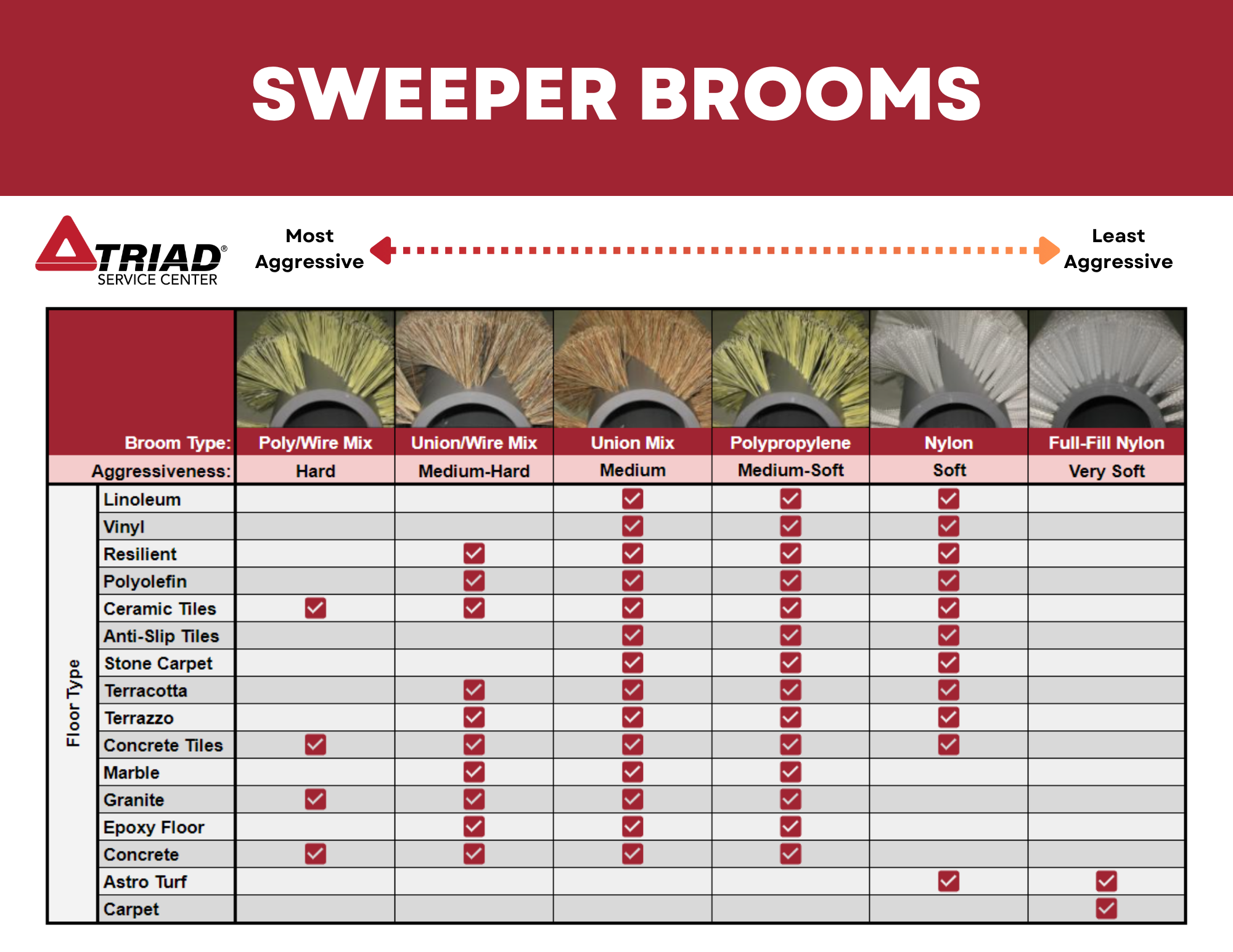
Fill Patterns of Sweeper Brooms
The best fill pattern for your sweeper broom depends on the type of debris you wish to remove. Check out the following most common fill patterns to determine which will best meet your sweeping needs:
Double Row (DR)
The double row fill pattern is the most popular fill pattern for sweeper brooms due to its versatility. With 6-8 sections of two rows of bristles separated by a generous gap, the bristles sweep fine debris, such as dust and sand, while the spaces between each double row of bristles collect bulkier debris and litter. For general sweeping purposes, the double row fill pattern is a great choice due to its ability to collect a wide range of debris.

Single Row (SR) / Full-Fill / High-Density
Designed for sweeping primarily fine debris, the single row fill pattern is composed of 18-24 single rows of bristles. With only a small gap between each row, this fill pattern is also sometimes referred to as Full-Fill or High-Density. Single Row brooms are a very efficient choice for environments with a lot of dust or sand. However, because of the densely aligned rows, Single Row brooms cannot pick up large debris or bulky litter.

Herringbone
The Herringbone fill pattern is designed similarly to the Double Row (DR) fill pattern except that the rows are arranged in a v-shape. This shape allows for more efficient hopper loading as the debris is directed towards the center. Like the DR fill pattern, the Herringbone design works best for sweeping light to medium debris, from dust and sand to paper scraps and other mid-size litter.
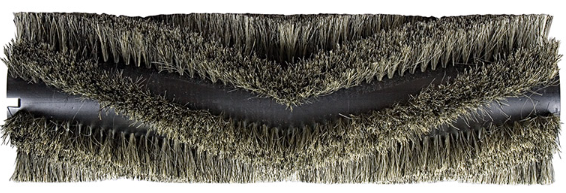
Patrol
Designed specifically for high-speed sweeping, the Patrol fill pattern is highly efficient at sweeping large areas such as parking lots. Also arranged in a v-shape, the Patrol fill pattern is similar to the Herringbone but has fewer rows of bristles with more tufts per row, leaving more space between rows to pick up bulky debris such as leaves, paper, and even cans.
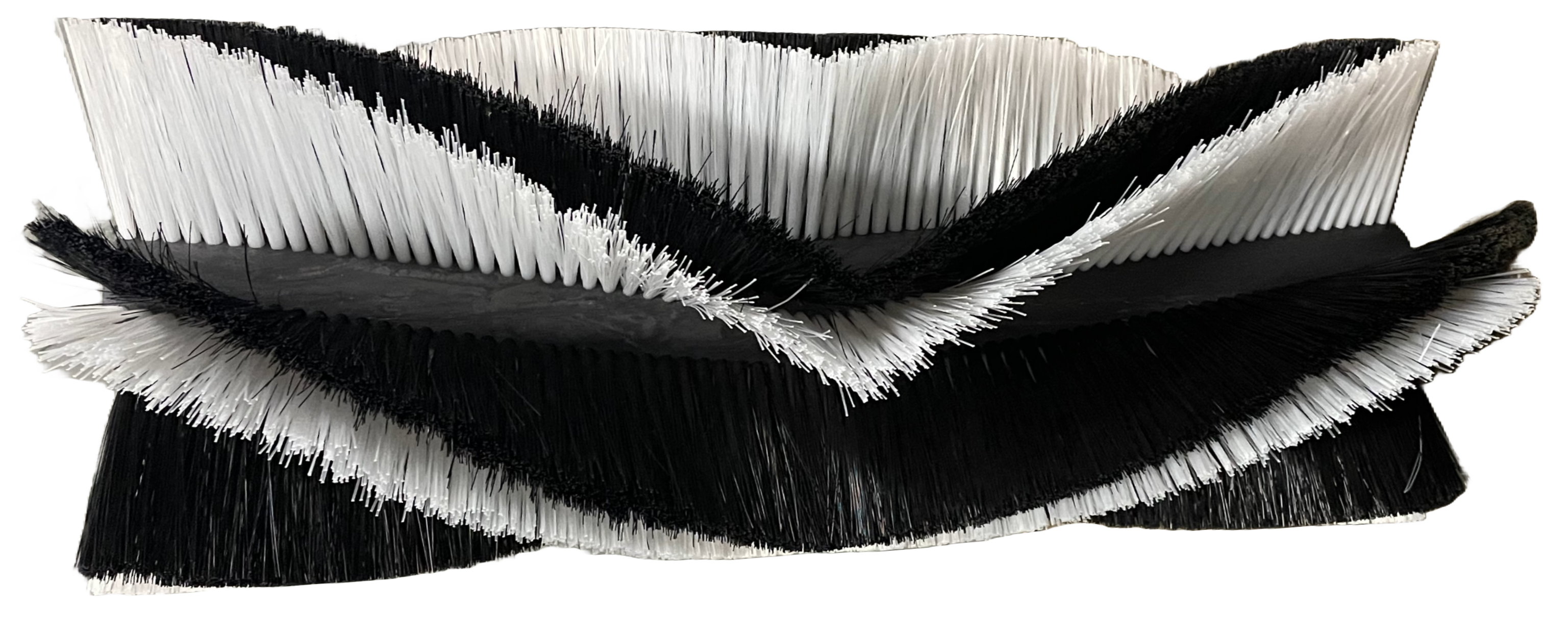
Window
Ideal for industrial settings, the Window fill pattern has densely aligned rows of bristles with rectangular gaps in an alternating pattern around the broom. These openings collect and trap light litter, such as small paper scraps. It should be noted that the Window fill pattern is patented by Tennant & Nobles and is designed specifically for their machines.

Side Brooms
To get close to walls and gutters, some machines also use Side Brooms, which are coated plywood or plastic discs lined with 2 or 3 rows of 6”-10” bristles (usually polypropylene or nylon) on the outer edge. Side Brooms are commonly used in both indoor and outdoor settings.

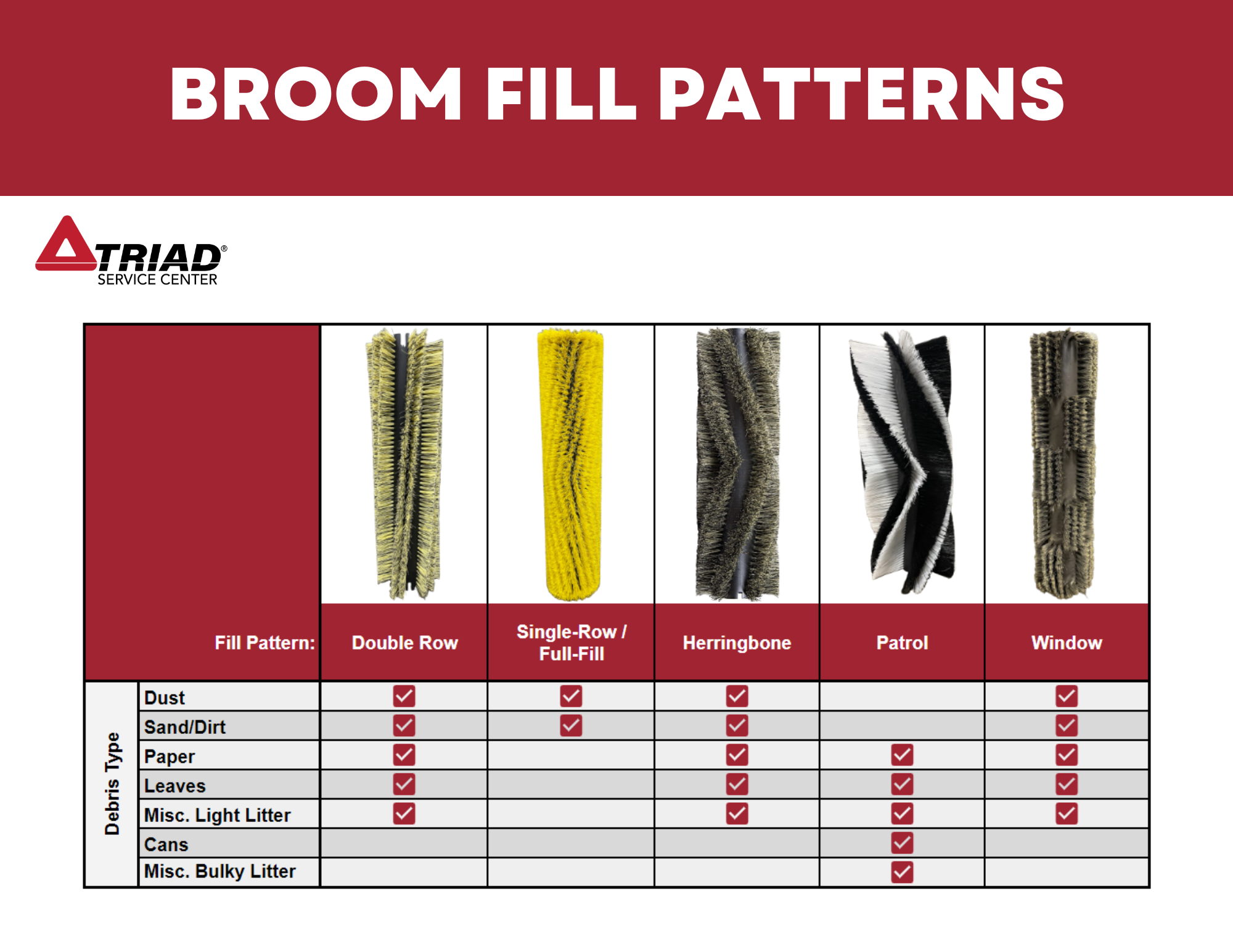
When Do I Need to Replace Sweeper Brooms?
How often you need to replace brooms will vary by usage, floor application, and the amount and type of debris being removed from the floor.
Generally, a good rule of thumb is that you should replace your sweeper brooms when they are more than halfway worn. If you are unable to determine how worn your brooms are, don’t hesitate to give us a call at (888) 834-9948 so we can provide you with the measurements for your broom.
Common Questions about Choosing Sweeper Brooms
What kind of sweeper broom works best for dust control?
In terms of material, Union/Wire Mix, Union Mix, and Nylon work the best in dusty environments and for sweeping fine debris. In environments where you will be sweeping dust or fine debris primarily, we recommend choosing the Single Row (SR)/Full-Fill pattern. However, if you will need to sweep larger litter and debris in addition to dust and fine debris, the Double Row (DR) and Herringbone broom fill patterns are both great versatile options.
What sweeper broom works best for removing compacted dirt or debris?
If you are sweeping surfaces with compacted dirt and debris, you’ll need a sweeper broom made of material that is relatively aggressive such as Crimped/Crinkle Wire, Poly/Wire Mix, or Union/Wire Mix. As far as the fill pattern goes, this will depend on what other type of debris you will need to remove. Double Row (DR), Single Row (SR), Herringbone, and Window are good fill pattern options for compacted dirt and debris, but we recommend reviewing our above descriptions of each fill pattern to make the best choice for your needs.
What sweeper broom works best for wet surfaces, debris and/or environments?
If you will be sweeping wet surfaces or wet debris, you’ll need a broom material that can handle water, such as Poly/Wire Mix or Polypropylene. The fill pattern you choose is completely dependent on what type of debris you need to sweep. Please refer to our earlier section Fill Patterns of Sweeper Brooms for more information.
What sweeper broom works best for high temperature surfaces and debris?
When sweeping in high temperature environments or hot debris, it’s important to choose a brush with heat resistance such as Union/Wire Mix, Union Mix, or Nylon. Again, the fill pattern you choose is completely dependent on what type of debris you need to sweep. Please refer to our earlier section Fill Patterns of Sweeper Brooms for more information.
What sweeper broom is the best general purpose?
If you’re looking for a versatile general purpose sweeper broom, Poly/Wire Mix, Polypropylene, or Nylon are all great materials. The most versatile sweeper broom fill patterns are Double Row (DR) and Herringbone, so those are good options if you’re looking for an all-purpose broom.
What sweeper broom works best for both indoor and outdoor applications?
While most sweeper broom materials would technically work for both indoor and outdoor applications, we recommend sticking to something durable yet not too aggressive, such as Poly/Wire Mix, Union/Wire Mix, Union Mix or Polypropylene. For sweeping large areas like parking lots, a Patrol fill pattern is a great choice for high efficiency sweeping. Refer to our Fill Patterns of Sweeper Brooms section for more information regarding the best fill pattern for your needs.
If you still need help determining which sweeper brush you should purchase for your machine to meet your specific sweeping needs, please refer to our buying guide below or call us at (888) 834-9948.
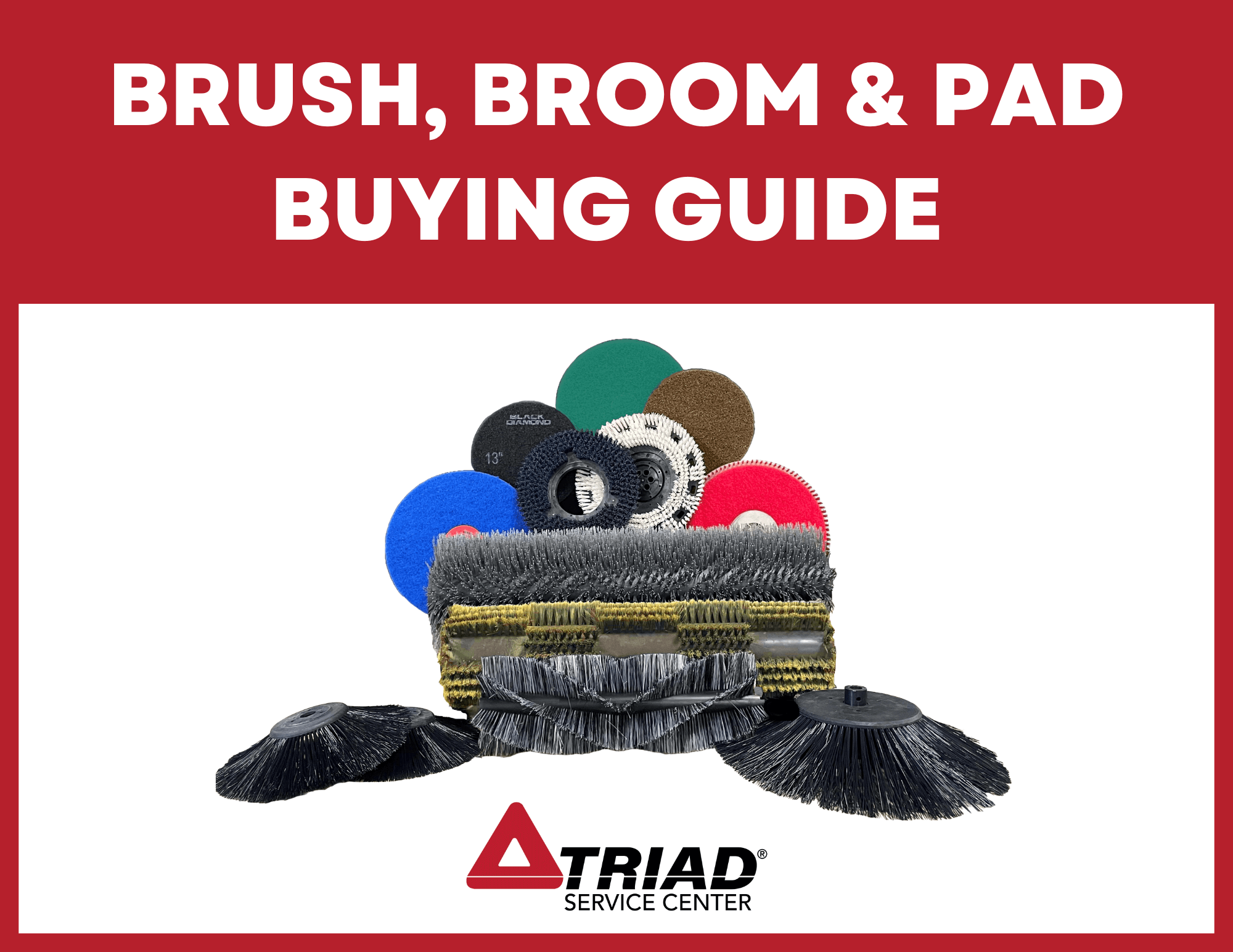
Questions? We’re here to help you.
Call us at (888) 834-9948
Email us at parts@triadservice.com
Or submit a help request here: Parts Request (triadservice.com)
©





